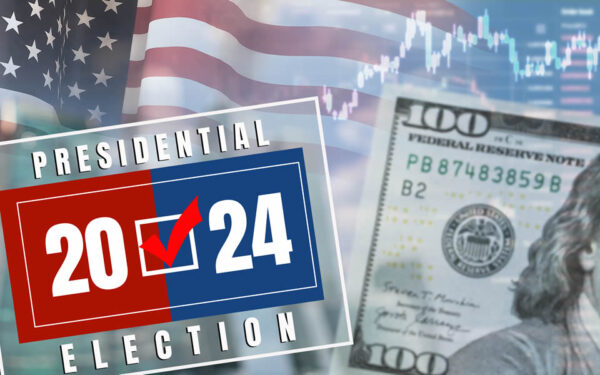The C-Corporation Advantage: Qualified Small Business Stock (QSBS) Gain Exclusion
By Katy Daiell, Partner, Tax & Business Services & Cassie Carangelo, Manager, Tax & Business Services
The IRS provides a substantial exclusion from tax on the gain from the sale of C corporation stock if certain requirements are met. The exclusion was enacted into law in 1993 but has become more attractive in recent years due to changes to tax law.
When the QSBS gain exclusion was first allowed, C-corporations were subject to federal tax rates of up to 35% as well as double taxation (on both corporate income when earned and on the dividends when the profits were distributed to the shareholders). Although gains could potentially be excluded upon sale of the stock, many taxpayers found structuring a business as a pass-through entity (such as an LLC or an S-corporation) as the preferred form of doing business because the total tax paid on the profits of the company was usually significantly less than that of a C-corporation.
Although C corporations are still subject to double tax, the maximum rate on C corporation earnings has been reduced to 21%. In addition, the maximum QSBS gain exclusion has increased from 50% to 100% of the gain over the years.
This article summarizes the amount of the potential gain exclusion along with some key requirements to qualify for this gain exclusion.
QSBS Gain Exclusion
Since first enacted, the maximum gain exclusion under Section 1202 has increased from 50% to 100% on sales of QSBS. Compounding the attractiveness of the increased QSBS gain exclusion is the reduced corporate tax rate, which is now a flat 21% under the Tax Cuts and Jobs Act. The corporation will be taxed on profits and the gain from the sale of the assets if the sale transaction does not qualify for the Section 1202 gain exclusion.
Depending on when the QSBS was acquired, Section 1202 allows noncorporate taxpayers to exclude from gross income 50%, 75%, or 100% of the gain from the sale or exchange of QSBS that is held for more than five years. For QSBS held more than five years, the amount of gain eligible for exclusion is determined based on the following acquisition dates:
| QSBS Acquisition Date | Gain Exclusion |
|---|---|
| Before February 18, 2009 | 50% |
| Before September 28, 2010, and after February 17, 2009 | 75% |
| After September 27, 2010 | 100% |
The maximum gain exclusion applies to each eligible shareholder. Both the shareholder and the corporation must meet specific requirements to qualify.
Shareholder Level Requirements
For a shareholder to be eligible for gain exclusion under Section 1202, they must meet these requirements:
- The shareholder cannot be a corporation; an individual must own the stock directly or indirectly via an interest in a pass-through entity.
- The shareholder must hold QSBS for more than five years before it is disposed.
- The shareholder must have acquired the stock when it was originally issued on or after August 10, 1993.
Eligibility requirements will be met if the stock was acquired in exchange for money or other property but not if it was acquired by exchanging stock of another corporation. The requirements can also be met if the stock was issued to the original shareholder as compensation for services provided to the issuing corporation, such as by exercising stock options.
Corporation Level Requirements
For stock to qualify for Section 1202 favorable treatment, it must have been issued by an eligible corporation. Eligible corporations are any domestic C-corporations that are qualified small business corporations when the stock was issued and during most of the period the stock was held. Additionally, the corporation must satisfy the active business requirement during substantially all of the taxpayer’s stock-holding period. It is important to note that the C-corporation requirement means any stock issued by an S-corporation will not qualify as QSBS. However, if an LLC or an S-corporation converts to a C-corporation and subsequently issues stock, and all other QSBS requirements are satisfied, issued stock may qualify as QSBS.
The C-corporation must also be a qualified small business. An eligible corporation is a qualified small business if its aggregate gross assets do not exceed $50 million (based generally on the cost basis) from August 10, 1993, to immediately after the issuance of the stock. Additionally, there is an active business requirement. A corporation is deemed to have an active business (for purposes of meeting the QSBS test) if at least 80% of the corporation’s assets (based on value) are used in the active conduct of one or more qualified trades or businesses. A qualified trade or business means any trade or business other than a business involving services performed in health, law, engineering, architecture, accounting, actuarial science, performing arts, consulting, athletics, financial services, or brokerage services. A business whose principal asset is the reputation or skill of one or more employees will not meet the qualified trade or business test. The assets that qualify for the 80% of assets test include intangible assets, assets used for research and development, and, in some situations, working capital and investment assets that are temporarily held to be used in the business.
Key takeaways
A business entity and its owners should consider whether they will or can potentially qualify for the QSBS exclusion at the following times:
- Upon the formation of the company
- When considering whether they are operating in the most tax-efficient structure
- Prior to raising new capital or issuing new C corporation stock
- Prior to selling a business
- After the sale of a business
The Qualified Small Business Stock (QSBS) Gain Exclusion is a tax benefit that allows for a significant exclusion from tax on the gain from the sale of C corporation stock. Recent changes in tax law, including a reduction in the maximum tax rate for C corporations and an increase in the maximum QSBS gain exclusion, have made being a C corporation more advantageous.
Please consult a Marcum tax professional to see if you are eligible for this exclusion or to learn whether a conversion to a C-corporation entity can create this opportunity for your business.






